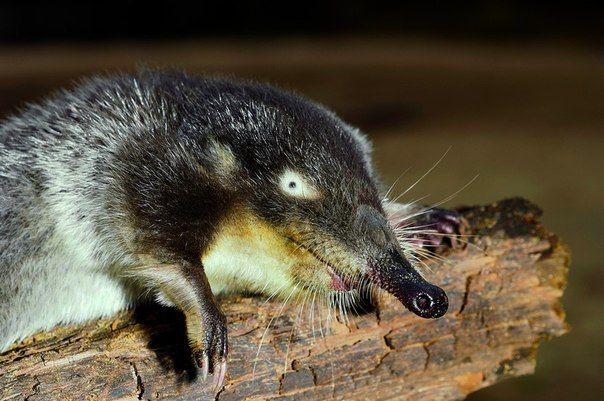
As is well known, there are many types of mammals on earth. In fact, you can certainly mention mammals that often you see and you know what kind of animal it was. Starting from mammals that live on land to those who live in water.
But, do you know that there are also mammals that can live on land and also in water (semiaquatic)? It’s called Desmana Moschata. You can find these mammals in Russia. Have you ever heard of these mammals?
Maybe there are still many of you who don’t know about Desmana Moschata. To answer your curiosity, let’s see about a semiaquatic mammal only in Russia: Desmana Moschata.
There are many types of mammals that spread across the country on the earth. Mammals certainly have their own characteristics that make them easy to recognize. One characteristic of mammals is childbirth.
Regarding the habitat where mammals live it also varies. Starting from mammals that you can easily find to mammals that are almost extinct. Both those who live on land and those who live in water. But there are also mammals that live in water and on land.
Mammals that live in two places or also called semiaquatic mammals, may be very difficult to find. Not all countries have such mammalian species. But you can find semiaquatic mammals in Russia.
This semiaquatic mammal from Russia is called Desmana Moschata. You can only meet these mammals in Russia. If you visit Russia, you can take the time to see Desmana Moschata. And you can share stories with your family and friends about Desmana Moschata.
I think there are still many of you who are not familiar with Desmana Moschata. To introduce you to the Desmana Moschata, this article will discuss about a semiaquatic mammal only in Russia: Desmana Moschata.
- About Desmana Moschata
Desmana Moschata is a small semiaquatic mammal that you can find in Russia, Ukraine and Kazakhstan. Precisely living in the basin of the Volga River, Don River and Ural. Desmana Moschata is a mammal that builds burrows on the banks of ponds and rivers that have a slow flow. These mammals are also called Russian Desman.
Desmana Moschata lives in small groups of 2 to 5 animals. These mammals are still included in the family Talpidae. Desmana Moschata has eyes but it is not functional (can be said to be blind), it uses Eimer organs that are sensitive to touch. Desmana Moschata’s body length can reach 21 cm and its tail has a length of up to 20 cm. Desmana Moschata has webbed hind legs.
Desmana Moschata have a long snout, but flexible. The pads on the legs of these mammals are covered by thick hair. Desmana Moschata has a long tail, scaly, flattened laterally but wide at the base.
- Habitat Desmana Moschata
Desmana Moschata is an animal that lives in two places, both in water and also on land. You can find Desmana Moschata in river basins that have a slow flow of water, freshwater, lakes and ponds. These mammals love small ponds where there are many insects, amphibians and crayfish. On the edge of the pond or other Desmana Moschata habitat, these mammals will make nests where the entrance of the nest is underwater.
But this Desmana Moschata habitat is slowly disappearing. This is caused by water pollution, illegal fishing and other causes. Because of the destruction of this habitat, the population level of Desmana Moschata continues to decline.
- Desmana Moschata’s Behavior
Desmana Moschata is a mammal that lives in small groups (2 to 5 animals). They also like to share their nests. Desmana Moschata includes animals that are mostly active at night. But you can also see them during the day. Desmana Moschata tends to move because it adjusts the change in water level that is the habitat of the mammal.
- Desmana Moschata’s Food
Desmana Moschata who lives in a nest near a river or pond will certainly eat the animals that are around their habitats. These mammals like to eat fish, amphibians, crayfish, insects, crustaceans and other aquatic organisms. But Desmana Moschata is also known as an omnivorous mammal. The food consumed by mammals is at least composed of 30 different plant species and 72 species of aquatic invertebrates.
- Breeding of Desmana Moschata
Desmana Moschata generally survives in the wild for 3 years. These mammals have the ability to reproduce twice a year. Usually the birth of Desmana Moschata’s child occurs in the early summer and autumn. Desmana Moschata females can give birth to as many as 3 to 5 babies. Desmana Moschata reach sexual maturity when it has reached the age of 12 months.
- Desmana Moschata Be Endangered
The life of Desmana Moschata is now endangered animal. This is said because the population of Desmana Moschata continues to decline every year (this includes a drastic decline). This was also influenced by the demand for Desmana Moschata fur which was traded.
The cause of the decline in the population of Desmana Moschata is also caused by damage to the living habitat of these mammals. The existence of illegal fishing, pollution of rivers and ponds ecosystems, fishing using electricity and many other factors that cause Desmana Moschata total population has declined. Currently, an estimated population of Desmana Moschata reaches approximately 30,000 to 35,000 animals only throughout Russia. That is why Desmana Moschata can be endangered in the near future.
And maybe there are still some of all you need to know about a semiaquatic mammal only in Russia: Desmana Moschata that haven’t been listed above. I hope this article can really help you to find out all you need to know about a semiaquatic mammal only in Russia: Desmana Moschata. So, are you interested in Russia to see Desmana Moschata?
